This is a pattern that was initially intended to mimic a sand shrimp. Once I got out on the water and actually fished the pattern, found that it did a much better job of mimicking mummichogs and/or killifish. You can bounce it along the bottom like a sand shrimp, or swim it in the upper middle part of the water column like a mummichog and it will produce large, aggressive trout either way. I’ve had best luck with this pattern on overcast days in estuaries targeting fresh steelhead or searun brook trout.
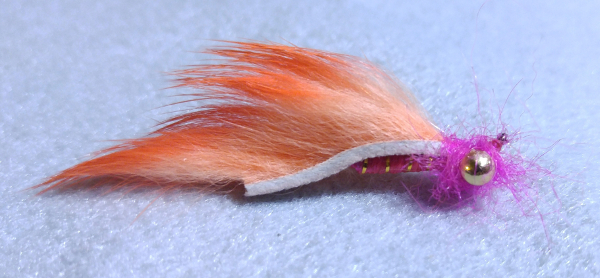 I would also like to mention that I have never professed to be a professional name giver or anything of the like. I suppose I could give some thought into giving the fly proper name… That would involve tapping into my creativity, and that precious resource is best reserved for the vice.
I would also like to mention that I have never professed to be a professional name giver or anything of the like. I suppose I could give some thought into giving the fly proper name… That would involve tapping into my creativity, and that precious resource is best reserved for the vice.
Materials
- Size 10 streamer hook. Mustad is always a good choice.
- Gold tinsel.
- Orange bunny zonker strips.
- Pink seal fur.
- Pink Thread. I’m using Danvilles 210 denier.
- Dumbbell eyes of choice. I’m using White River fly shops gold hourglass eyes in the small size.
- Lead free wire.
- Clear nail polish
How to Tie:
Step 1: Wrap a generous amount of lead wire around the hook shank.
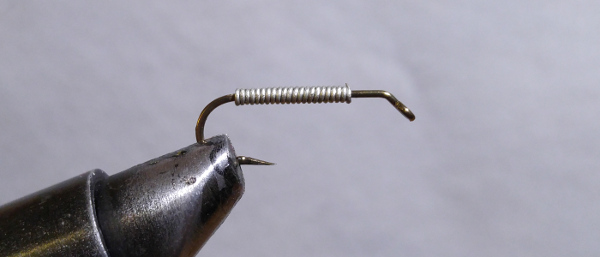
Step 2: Tie on your dumbbell eyes. The reason for both weighted wire and dumbell eyes is to spread the weight a bit more evenly across the fly. Using heavy dumbbell eyes results in a “diving” or “jigging” action on the fly. This action can surely be successful (just look at the popularity of the clouser minnow), but was not my aim while designing this fly. I just wanted a very slight jigging action, hence the lighter dumbbell eyes combined with weighted wire. That being said you could make a similar fly and just tie on larger dumbbell eyes to give it a more erratic retrieve.
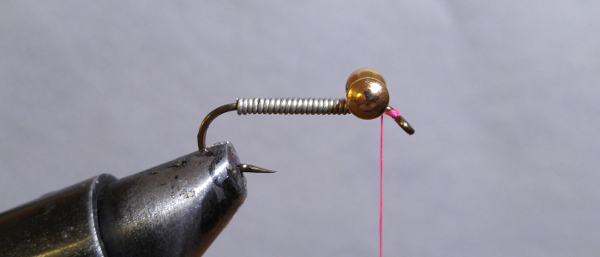
Step 3: Tie in your tinsel near the hook bend.
Step 4: Cover entirety of the lead free wire with pink thread.
Step 5: Make open wraps with the tinsel towards the hook eye. Tie in right behind the dumbbell eyes.
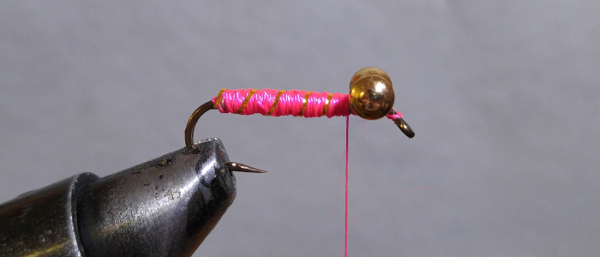
Step 6: Coat tinsel and thread wraps with clear nail polish. This will make the colours and flash pop, and greatly increase the flies durability.
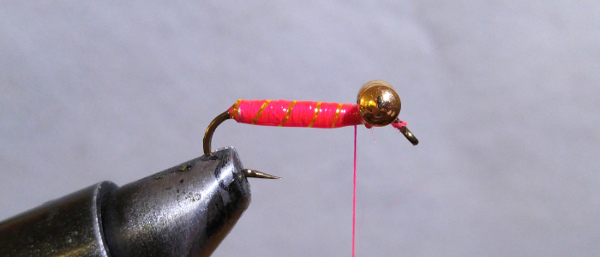
Step 7: Make a hole in a rabbitt zonker strip with a needle (or the hook point if you prefer). Remove hook from the vice and slide the rabbit zonker strip into the hook bend. The hook should penetrate directly in the middle of the strip width-wise for maximum durability. If the hole is to close to the edge of the zonker strip, the first fish that strikes is going to have a much greater chance of ripping the rabbit zonker out of place.
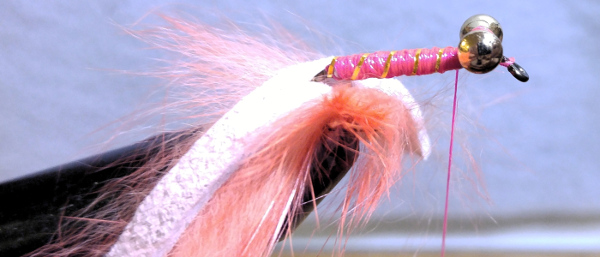
Step 8: Rotate the bunny zonker strip so that the grain of the hair is pointing to the rear of the fly.
Step 9: Cut off the front most part of the zonker strip so it lies at, or just behind the dumbbell eyes. and tie it in to secure it in place. The strip should be secured in two places, at the tie in location being the dumbbell eyes, and where the hook penetrates the zonker strip.
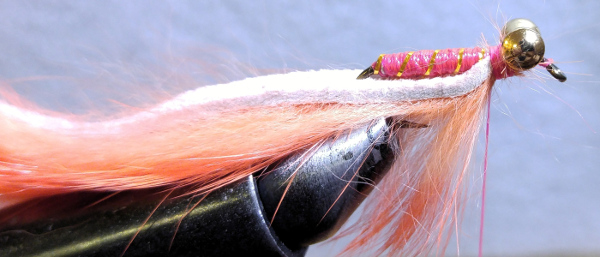
Step 10: Cut the tail end of the zonker strip to personal taste. I like to leave just over 2/3rds of the length of the hook shank trailing behind the hook bend. Much longer and you risk the zonker wrapping around the hook shank, much shorter and you sacrifice action in the water. If in doubt it’s always a good idea to go a bit on the longer side and you can always trim the fly on the water if needed.
If you buy anything below, I get a bit of beer money (commission).
Step 11: Make a dubbing noodle of seal fur that hangs behind the dumbbell eyes.
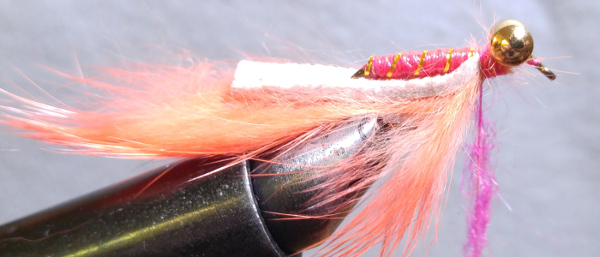
Step 12: Wrap the seal fur dubbing behind, around, across, and in front of the dumbbell eyes. The end result should be the eyes being surrounded in seal fur. I usually do a wrap beihind, two cross wraps in opposite directions over the dumbbell eyes, and a few wraps in front of the dumbell eyes.
Step 13: Hold dubbing back with one hand and whip finish near the hook eye.
Step: 14: Apply a touch clear nail polish to the whip finish wraps to lock them in place. You could also use head cement, but it’s the same thing.
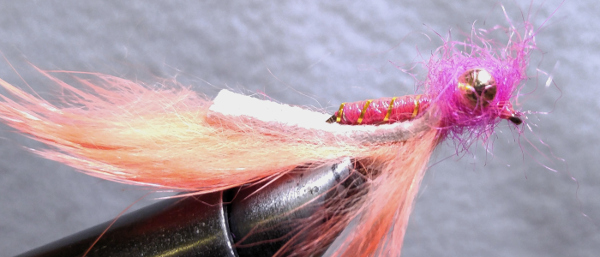
Finished fly picture above, but wait! It’s upside in the vice! The fly in it’s proper orientation is pictured below.

As mentioned at the start of the post, this fly has been very effective for sea run brookies and steelhead. Landing me many sea run brookies and steelhead this fall. The upturned hook point allows it to be bounced along the bottom like a shimp, and since it’s quite heavy it can be swung in surprisingly fast current and still sink down to the strike zone quite quickly. Trout have also taken it in the upper reaches of the water column in a 10 foot deep pool as well.
The video below shows the flt catching a mid sized steelhead and a fresh sea run brookie.
This fly is what I like to call “weed resistant”. The hook point is buried in the rabbit fur which offers some resistance to weeds, but it doesn’t have the stiff piece of mono required to actually be considered a weedless fly. It does a good enough job of swimming through the leaf litter which is ever present while targeting steelhead in the fall.
I’ve done variations with the seal fur being orange and the bunny strip being pink, both orange and both pink and have had successful results with all colour combinations. You can substitute the rabbit zonker for a pine squirrel zonker for fishing in areas with smaller bait fish. This is true of almost any pattern using zonker strips actually.

You’re really knowleadgeable!